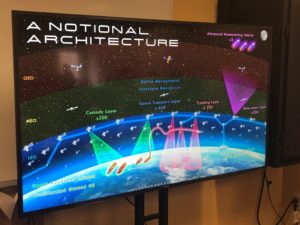
The Space Development Agency (SDA) is reaching out to industry for new ideas and emerging technology solutions that can help inform its efforts to build up a preliminary space-based mesh sensor architecture in low-Earth-orbit over the next two years. The agency, which was stood up in 2019, released a broad agency announcement (BAA) via the contracting opportunity website beta.sam.gov Jan. 21, in which it seeks “novel architecture concepts, systems, technologies and capabilities” that will help SDA improve its progressive iterations…

 By
By 











